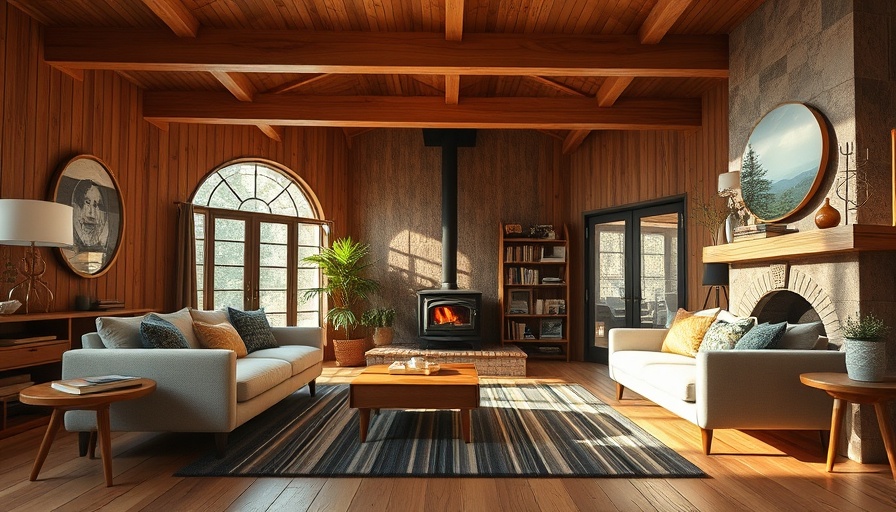
Rethinking Space: The Concept of Voyeurism in Design
The recent renovation of a mid-century house by the architects Noam Dvir and Daniel Rauchwerger from BoND has stirred conversations around the intersection of architecture, privacy, and social interaction. Nestled in Fire Island Pines, a well-known sanctuary for the queer community, this house challenges conventional norms about personal space and observes the notion of "voyeurism" in a clever, playful manner. The architects invoke the thrill of visibility, quite literally, by designing spaces that invite observers into the intimate moments of daily life.
Historical Context of Fire Island Pines
Fire Island Pines has a rich heritage as a celebration of LGBTQ+ culture since the mid-20th century. Initially developed as a summer retreat, it has retained an allure for creative professionals seeking inspiration away from urban interruptions. Renovations over the years have perpetuated the legacy of crucial modernist architects, like Horace Gifford, enabling spaces that are both nostalgic and contemporary. Dvir and Rauchwerger's home embodies this spirit, blending historical homage with their visionary interpretation of modernism.
Creating Efficient Workspaces: Insights from BoND's Renovation
The architects' playful design ethos offers valuable takeaways for digital nomads looking to create efficient workspaces. Their choice of open sight lines can be adapted even in home offices by strategically positioning furniture to engender creativity through visibility and light. Just as the interior encourages social interaction, a workspace must also inspire collaboration without sacrificing comfort. Consider how openness can be both inviting and enable productive focus.
Modernism Meets Personal Style: Importance of Personalized Spaces
Through their design, the architects underscore the need for spaces that resonate with individual identities. Personalizing your workspace by incorporating elements that reflect your personality—such as color, texture, or historical significance—can foster deeper satisfaction and motivation while working from home. Emulating BoND’s approach to blending modernism with personal flair might just result in a workspace that feels uniquely yours, not just aesthetically pleasing but also functional.
The Balance Between Functionality and Aesthetics
This renovation beautifully illustrates how design can maintain functionality while still offering aesthetic delight. For those mixing work and leisure at home, ensuring that a workspace is as visually appealing as it is organized is paramount. Choose ergonomic furniture that complements an efficient layout; this is the key to creating a purposeful home office. As seen in the BoND house, combining style with usability creates a stimulating environment.
Risk Factors in Open Design
While the notion of voyeurism in home design is tongue-in-cheek, it unveils risk factors associated with open layouts, such as reduced privacy. Digital nomads need to consider their own needs for privacy when creating workspaces in open environments. Strategies such as using room dividers or designing flexible layouts that can transition between work and leisure can help mitigate these concerns, ensuring that your workspace remains both inviting and functional.
Final Thoughts: Embracing Unique Design Elements
The renovation of the BoND house serves as an inspiring reminder for digital nomads to embrace unique elements in their home offices. Design is not just about appearance; it’s about creating spaces that tell a story, encapsulate values, and enhance productivity. As remote work continues to gain traction, let this playful yet functional design philosophy inform your approach to your workspace.
 Add Row
Add Row  Add
Add 




Write A Comment